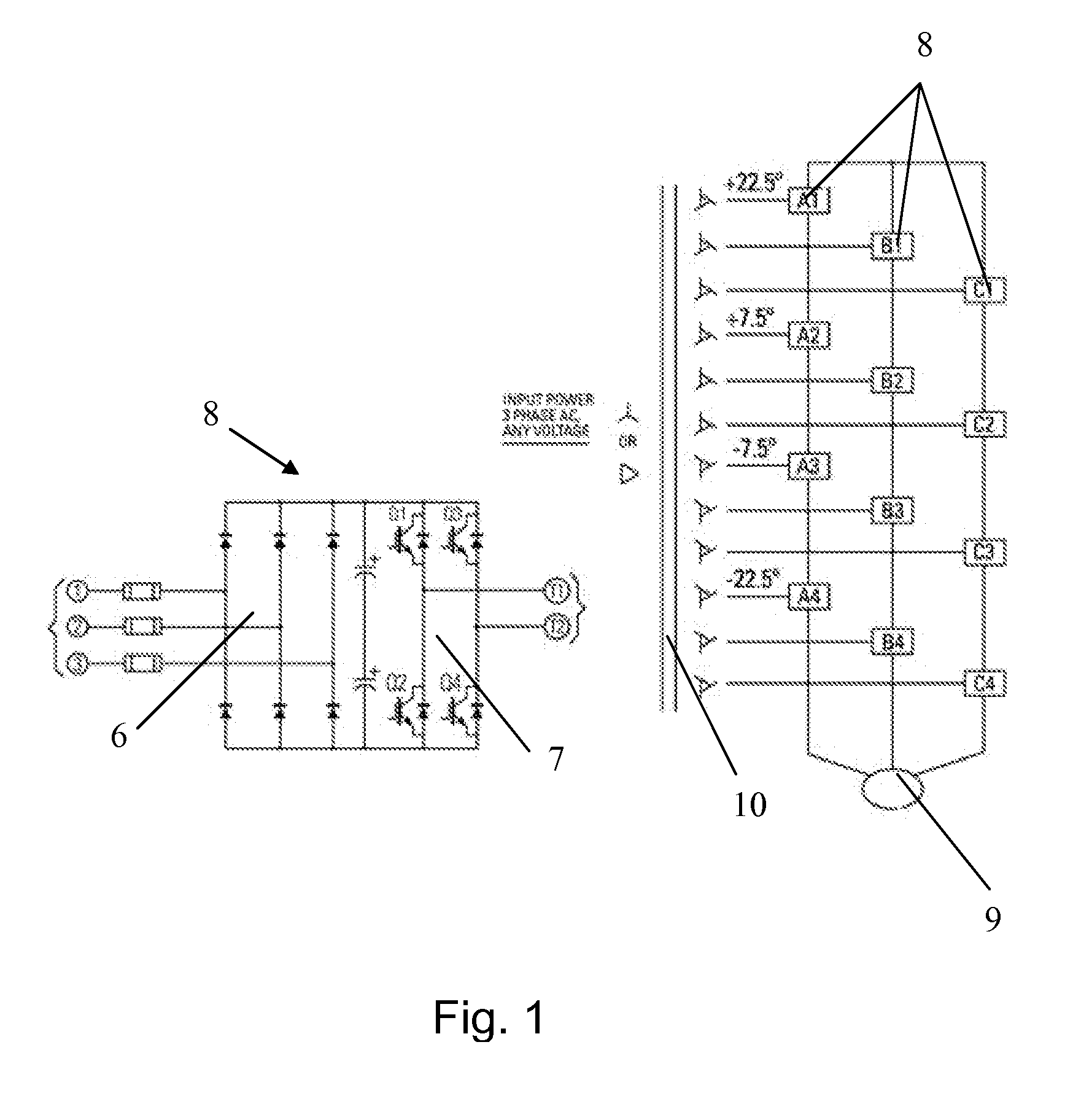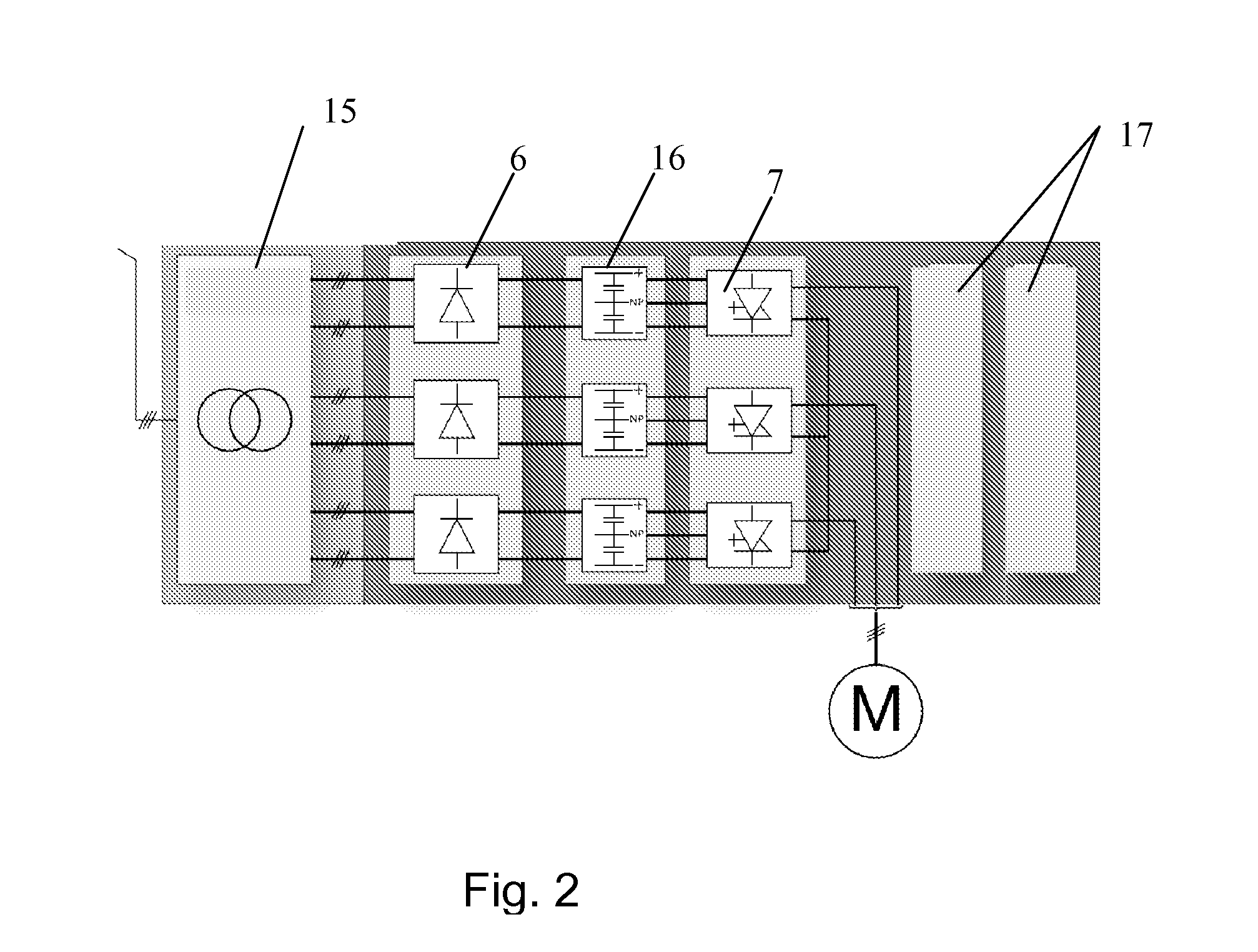Frequency converter
a frequency converter and turbine technology, applied in the direction of dc-ac conversion without reversal, machine/engine, electric generator control, etc., can solve the problems of large installation cost and low output, inherently periodical or unpredictable, and structural challenges, and achieve the effect of low output and large installation cos
- Summary
- Abstract
- Description
- Claims
- Application Information
AI Technical Summary
Benefits of technology
Problems solved by technology
Method used
Image
Examples
Embodiment Construction
[0069]The system is intended to be connected to a turbine, for example a wind turbine. A typical wind turbine is illustrated in FIG. 3 and comprises at least one turbine blade 1 connected to a rotating hub 2. The hub is connected to a turbine housing / nacelle 3 mounted atop a tower, and the nacelle 3 rotates to face the wind by means of controlled servo motors.
[0070]FIG. 4 shows a schematic view of the system according to the present invention. The FIG. 4 shows the main components of the system which comprises the turbine 1, 2, 3, 4 with the rotating hub 2 which drives a multi pole synchronous generator 5 situated in the nacelle 3. The generator 5 can have permanent magnets or rotor field windings. The multi pole generator 5 has galvanic isolated stator windings corresponding to the number of rotor poles and is therefore suited for a frequency converter interface of a type that can add up the voltages from different stator winding groups, which typically will be a multi level frequen...
PUM
 Login to View More
Login to View More Abstract
Description
Claims
Application Information
 Login to View More
Login to View More - R&D
- Intellectual Property
- Life Sciences
- Materials
- Tech Scout
- Unparalleled Data Quality
- Higher Quality Content
- 60% Fewer Hallucinations
Browse by: Latest US Patents, China's latest patents, Technical Efficacy Thesaurus, Application Domain, Technology Topic, Popular Technical Reports.
© 2025 PatSnap. All rights reserved.Legal|Privacy policy|Modern Slavery Act Transparency Statement|Sitemap|About US| Contact US: help@patsnap.com



